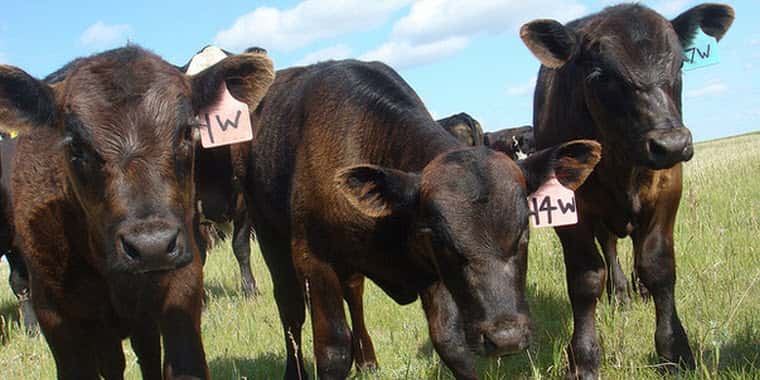by Kris Ringwall, Beef Specialist, NDSU Extension Service
What is the beef industry doing with all the potential to grow meat in the business?
So much information is available today that producers need to make themselves stop and ponder what the information means. Continually marching down the path without input plus pondering does not create a thoughtful environment.
Recent discussions of costs and output in the beef cow industry need some of that pondering. As I ponder the concepts that make up the statement “Costs are going up, production is stagnant and prices are falling,” lots of thoughts come up. In this ever-increasing cost environment, let’s talk about production.
This was a point to ponder as I reviewed weaning weight averages from two sources of commercial cattle data. I grouped the data by five-year increments: 2000 to 2004, 2005 to 2009 and 2010 to 2014. The data is not directly comparable, but pondering certainly entails reviewing various sources of information.
The first set of data was heifers, steers and bulls in the CHAPS (Cow Herd Appraisal of Performance Software) data. The weaning weight numbers look like this: From 2000 to 2004, the average weaning weight was 550 pounds; from 2005 to 2009, the average weaning weight was 561 pounds; and from 2010 through 2014, the average weaning weight was 554 pounds.
The second set of data also was for heifers, steers and bulls in FINBIN from the Center for Farm Financial Management, University of Minnesota (http://www.finbin.umn.edu/). The weaning weight numbers from 2000 to 2004 noted the average weaning weight was 545 pounds; from 2005 to 2009, the average weaning weight was 558 pounds; and from 2010 through 2014, the average weaning weight was 545 pounds.
A lot of numbers go into those thoughts, thus the pondering point: CHAPS weights, 550, 561, 554; FINBIN weights, 545, 558, 545. That is the pounds weaned off commercial-type cowherds in North Dakota in five-year increments since 2000. The data is assumed to be typical of beef production and would imply that in the last 15 years, commercial beef producers are not increasing the pounds of calf weaned off the commercial cow.
That seems somewhat odd, but it also leads to my thought that production is stagnant. Actually, the CHAPS cattle leveled off in weaning weights even prior to the turn of the century, and these values for average weaning weight have been typical, even through the 1990s.
So has production truly stabilized? Keep in mind the reason for the question: If production is stable, then increased costs cannot be recouped by increased production pounds.
Just out of curiosity, I thought I should check out the American Angus Association because it publishes average weaning weights. The data were for bulls and heifers from the American Angus website (http://www.angus.org/NCE/AHIRAvg.aspx). The weaning weight numbers from 2000 to 2004 noted the average weaning weight was 606 pounds; from 2005 to 2009, the average weaning weight was 615 pounds; and from 2010 through 2014, the average weaning weight was 621 pounds.
I anticipated that the weaning weight values would be slightly greater than for the commercial producer, so now one can ponder CHAPS weights (550, 561, 554), FINBIN weights (545, 558, 545) and American Angus Association weights (606, 615, 621). Interestingly, the purebred weaning weights still are increasing in contrast to the commercial weaning weights. These numbers are moving in the same direction as the EPD (expected progeny difference) genetic trends for weaning weight within the American Angus Association (http://www.angus.org/NCE/GeneticTrends.aspx).
Going back an additional five years to account for the delayed effect of the genetic influence of purchased American Angus Association-registered bulls, the EPD value for weaning weight from 1995 to 1999 averaged 26.6 pounds; from 2000 to 2004, the average EPD value for weaning weight was 33.6 pounds; from 2005 to 2009, the average EPD value for weaning weight was 41 pounds; and from 2010 through 2014, the average EPD value for weaning weight was 48.4 pounds.
Here are more thoughts to ponder: If the cow-calf producer is not marketing the potential genetic growth that is bred into the cattle, why not? Or have we actually reached management levels that do not allow for full expression of growth? How does the cow-calf producer capture growth? Can a producer afford to sell 7-month-old calves? These questions lead to more thoughts and more pondering.
May you find all your ear tags.
For more information, contact https://www.ag.ndsu.edu/news or North Dakota State University Extension Service, NDSU Dept. 7000, 315 Morrill Hall, P.O. Box 6050, Fargo, ND 58108-6050.
Source: NDSU Agriculture Communication




